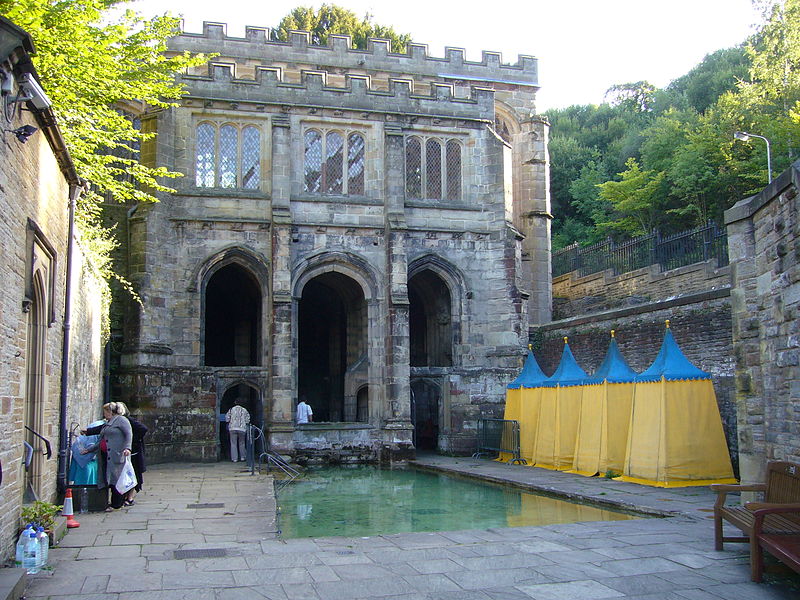St Winefride’s Well (often spelt “Winifred’s”) is a holy well located in Holywell, in Flintshire in North Wales. It is the oldest continually visited pilgrimage site in Great Britain.
The well is believed to be connected to St Mary’s well and chapel in Cefn Meiriadog, Denbighshire. In that it is one of the few locations mentioned by name in the anonymous medieval alliterative poem Sir Gawain and the Green Knight, it is interesting to compare the site’s beheading history with the beheading game in the poem.
History
The healing waters have been said to cause miraculous cures. The legend of St Winefride tells how in 660AD, Caradoc, the son of a local prince, severed the head of the young Winefride after she spurned his advances. A spring rose from the ground at the spot where her head fell and she was later restored to life by her uncle, St. Beuno.
The holy well is known as “the Lourdes of Wales” and is mentioned in an old rhyme as one of the Seven Wonders of Wales. It has been a pilgrimage site since the 7th century.
After a shrine was established in Shrewsbury around 1138, it and St Winefride’s Well became important pilgrimage destinations.
Richard I visited the site in 1189 to pray for the success of his crusade, and Henry V was said by Adam of Usk to have travelled there on foot from Shrewsbury in 1416.
In the late 15th century, Lady Margaret Beaufort had built a chapel overlooking the well, which now opens on to a pool where visitors may bathe.
Some of the structures at the well date from the reign of King Henry VII, or earlier. Later, King Henry VIII caused the shrine and saintly relics to be destroyed, but some have been recovered to be housed at Shrewsbury and Holywell.
In the 17th century the well became known as a symbol of the survival of Catholic recusancy in Wales.[6] From early in their mission to England, the Jesuits supported the holy well. In 1605, many of those involved with the Gunpowder plot visited it with Father Edward Oldcorne to give thanks for his deliverance from cancer, or as some said, to plan the plot.
James II is known to have visited the well with his wife Mary of Modena during 1686, after several failed attempts to produce an heir to the throne. Shortly after this visit, Mary became pregnant with a son, James.
Princess Victoria, staying in Holywell, with her uncle King Leopold of Belgium, visited the Well in 1828.


